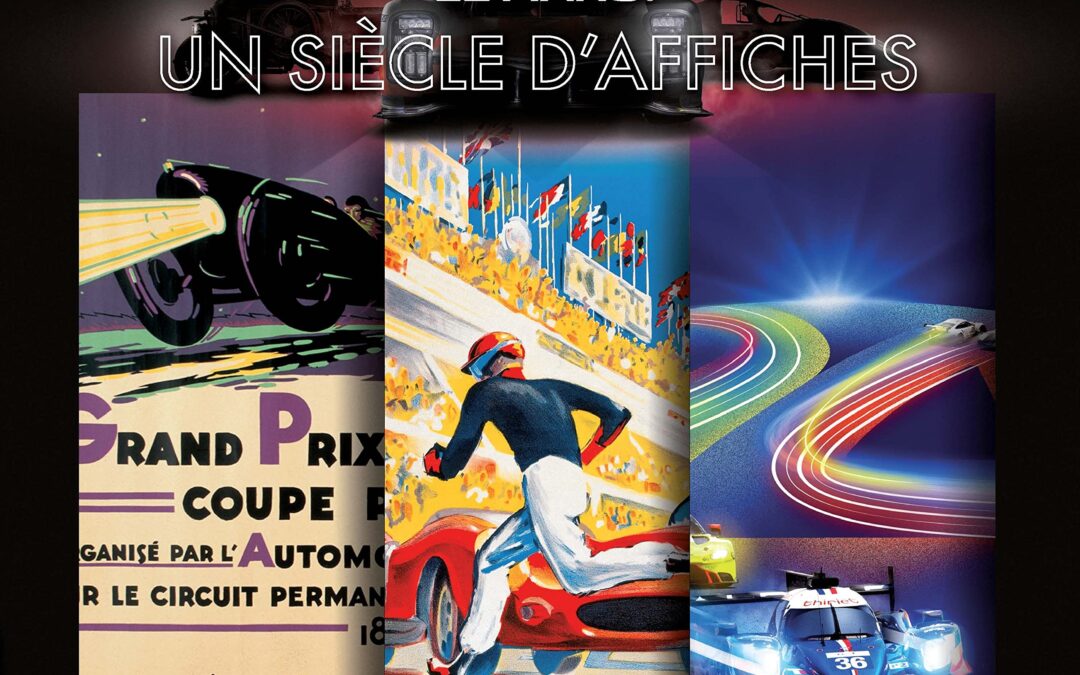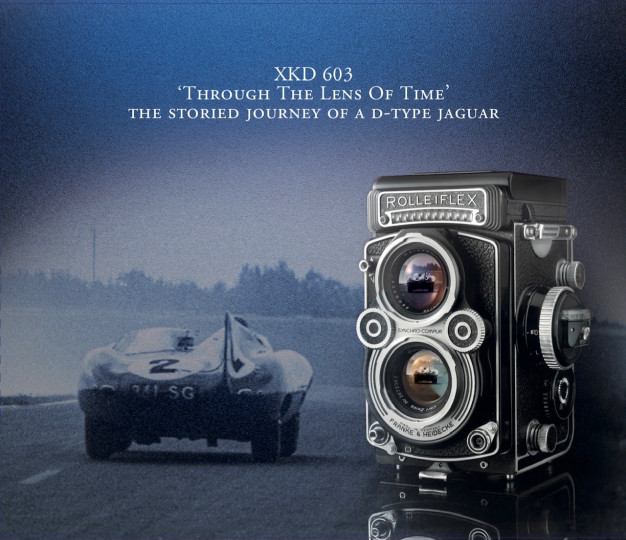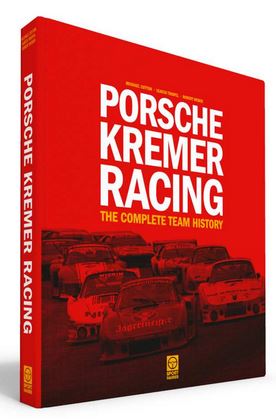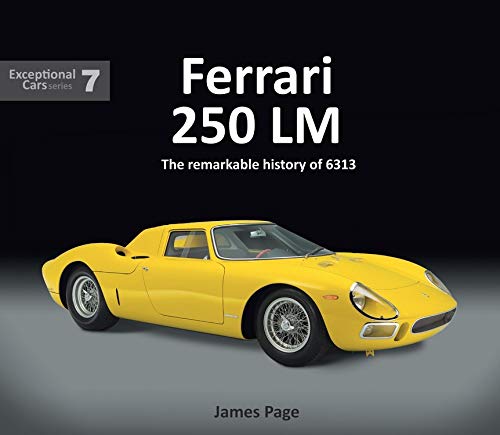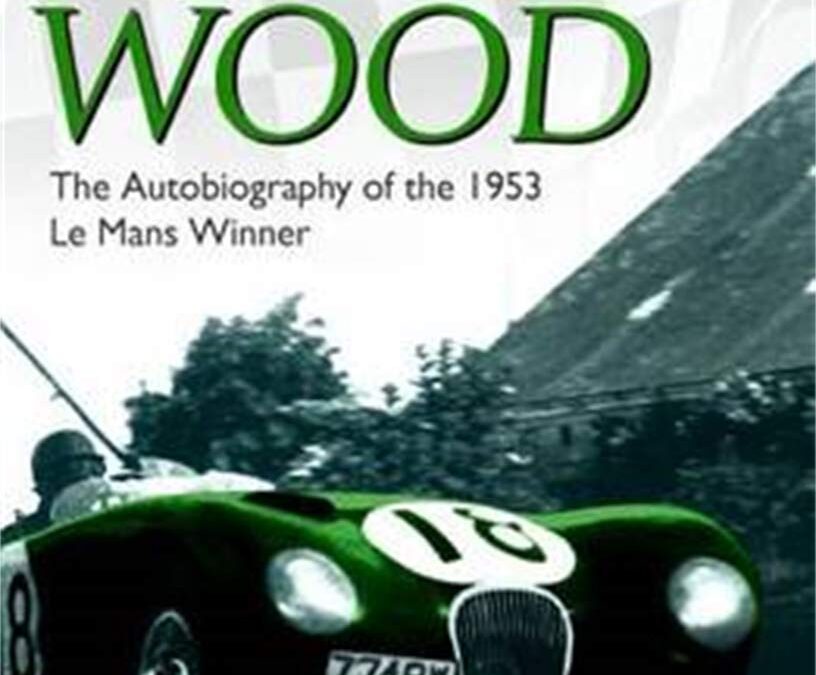
Duncan Hamilton won the classic Le Mans 24-Hours race in 1953, co-driving his workcentered C-Type Jaguar with Tony Rolt. In 1954 the same pair finished second, losing to a much larger-engined V12 Ferrari and by the narrowest margin in years. In all, Duncan Hamilton competed in nine of those great Le Mans endurance classics. Having cut his racing teeth in such pre-war cars as the R-Type M.G and the Bugatti Type 35B, Duncan graduated to one of the immortal Lago- Talbot Grand Prix cars—which he subsequently mislaid in a French coal-hole. After a hugely eventful racing career—only Duncan could get himself fired by Jaguar for winning the Rheims 12-Hours race in 1956—he eventually hung up his racing helmet in 1958. As Earl Howe wrote in the original 1960 foreword to this book, though the drivers of this age were fiercely competitive, there were also “friends to meet, stories to tell and almost certainly a party to be enjoyed…” Duncan Hamilton was certainly a little larger than life, and this book tells the story of a man who wasn’t just one of the most successful drivers of the 1950s, but also the man who trespassed at Brooklands, who spent the war in the Fleet Air Arm accidentally trying to drown American Admirals, and who was once stopped for speeding on the Cromwell Road, rushing to take part in a TV program on road safety. It is a must for any classic car enthusiast’s bookshelf.

Ferrari and Maserati, a rivalry entirely made in Modena which began around 1926, when the Maserati brothers built their first racing car in Bologna. From 1929, the rivalry became direct, even though it was Maserati against the Alfa Romeo of the Scuderia Ferrari. In 1947, Enzo Ferrari became a manufacturer, following in the footsteps of the Maserati brothers who, in the meantime, had moved to Modena. For Ferrari it was the dream of a lifetime come true and the end of any envy towards who had been manufacturers right from the start.
During the 1950’s, if the Ferrari drivers did not stand on the podium then the Maserati drivers did. The results of the rivalry until 1957, when Maserati terminated its direct involvement in races, highlight three F1 World Drivers’ Championships and four Sports, three Mille Miglia, one 24 Hours of Le Mans for Ferrari. The Maserati record book shows one F1 World Drivers’ Championship and a long list of victories in races worldwide.
However, this is not the whole story. A wider panorama is exhibited here, through the iconic cars of that rivalry.
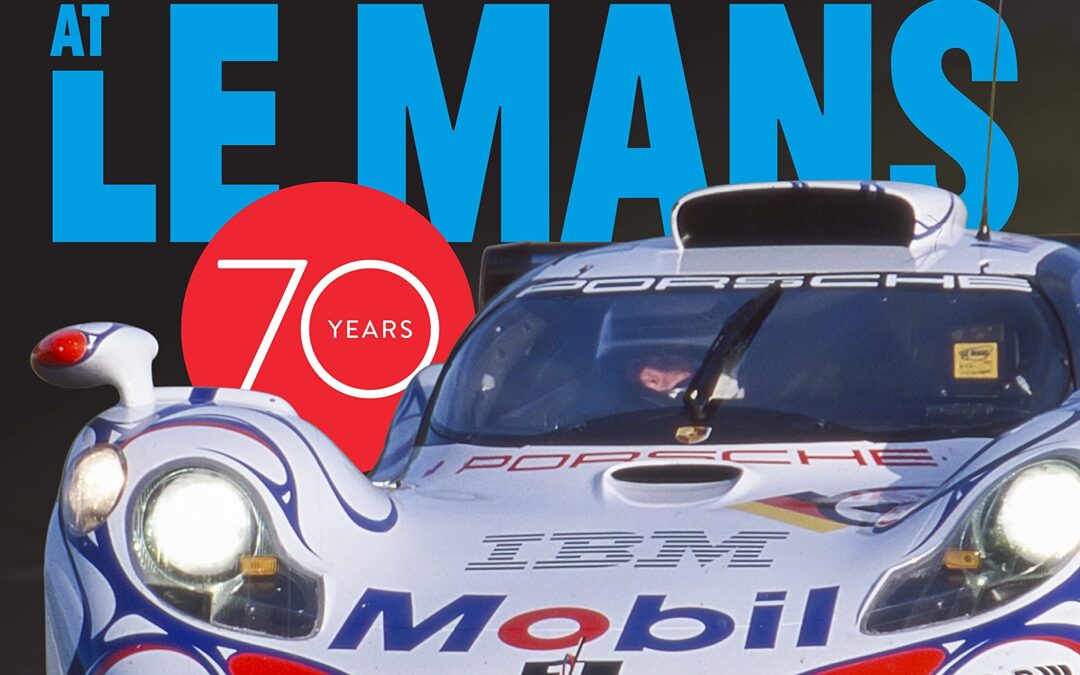
Packed with photography, narrative, and race results, Porsche at Le Mans is the definitive illustrated history of Porsche’s 70 years of competition in the world’s greatest motor race.
Porsche’s first visit to Le Mans came in 1951 with a streamlined 356 model, complete with aerodynamic wheel fairings. In a precursor to the reputation Porsche would establish over the next seven decades at the famous endurance race, the 356 ran like clockwork, beating the coveted record for the shortest time spent in the pits. Since that memorable debut, Porsche has won outright at Le Mans 19 times, more than any other marque, with a record series of seven consecutive victories from 1981 to 1987. This beautifully designed and extensively illustrated book is your definitive history of Porsche’s participation at La Sarthe, chronicling the exploits of both the works team cars and privateer entries.
Since 1951, Porsche has been represented at every single running of the 24 Hours. The models that have taken part comprise a roll call of great sports racing cars: 550 Spyder, 718 RSK, 904, 906, 907, 908, 910, 917, 936, 935, 956, 962, and GT1—right up to the hybrid 919 that won from 2015 through 2017. To this daunting list can be added the ubiquitous 911, the privateer’s choice for the race (in 1971, a year that saw a record number of Porsches take part, 19 of the 33 Porsches in the race were 911s). And hundreds of them are depicted in historical photos.
In addition to the legendary cars, you will bear witness to the exploits of Porsche drivers, a veritable murderer’s row of motorsport greats, including Derek Bell, Herbert Muller, Helio Castroneves, Mario Andretti, Jacky Ickx, Jo Siffert, Jochen Rindt, Mark Donohue, and Vic Elford, to name just a few.
Meticulously compiled by noted Porsche historian Glen Smale, Porsche at Le Mans is the most exhaustive celebration of the subject, created with full access to the Porsche archives in Stuttgart. The resulting tome is a treasure trove of history, photographs, data, and technical information, indispensable to any serious Porsche or motorsport enthusiast.

‘Glorious…gripping and sometimes tragic’ Robbie Coltrane
The inspirational story of the Bentley Boys and Le Mans – the race they made their own.
Le Mans, 1927. W.O. Bentley peered into the dusk. His three cars, which had led from the start, were missing. Two years running he had failed to finish. Once again he was staring into a void. Racing, his shareholders told him, was a waste of money. This race looked like being his last.
W.O’s engineering skills had been forged on the Great Northern railway and in the skies of the First World War, where Bentley-powered Sopwith Camels took the fight to Germany’s Red Baron. Determined to build and race his own cars, he assembled a crack team from all strata of 1920s Britain, from East End boys Leslie Pennal and Wally Hassan to multi-millionaires Woolf Barnato and Tim Birkin, men in search of adventures to blaze their way out of the dark past.
They dedicated themselves to building the perfect road and racing car. In the hayloft above their workshop, the first Bentley was born and soon it was the car of choice for the fast-living upper classes. They raced at the fashionable Brooklands circuit and then set their sights on the fledgling 24 Hours Le Mans race. An audacious goal for a British car, yet the Bentley Boys rose to the challenge. But on that night in 1927, after the biggest crash in racing history claimed their cars, could they still pull it off and put British motor racing on the map?
In the 1920s, Bentley Motors burned brightly but all too briefly; yet its tale, filled with drama, tragedy, determination and glory still shines a century on.

Between 1997 and 2014, Tom Kristensen won the world’s toughest motor race, the Le Mans 24 Hours, a record nine times and finished on the podium on five more occasions. Every time his car made it to the finish, in fact, he was in the top three. It is no wonder that this great sports car driver is known as ‘Mr Le Mans’ to motorsport fans around the world.
Now retired from racing, Kristensen shares in this book his deepest personal reflections and insights from inside and outside the cockpit. He looks back on more than 30 years spent striving for perfection in racing and tells of the battles and setbacks that sometimes seemed impossible to overcome, including a terrible accident in 2007.
- Climbing the racing ladder, from karting into Formula 3 single-seaters, including championship titles in Germany (1991) and Japan (1993), then Formula 3000 and a Formula 1 testing role with Tyrrell.
- Winning as an underdog on his first visit to Le Mans, in 1997 driving an elderly Joest-run privateer Porsche in which he impressed all onlookers with a night-time charge to vanquish Porsche’s factory-entered favourite.
- His second Le Mans victory came in 2000 on his maiden drive for Audi in the R8, a car that was to become all-conquering.
- Kristensen won the next five editions of Le Mans, four times with Audi and once with Bentley (in 2003), his last victory in this sequence taking him past Jacky Ickx’s previous record at the Circuit de la Sarthe.
- His eighth win came in one of the all-time classic contests at Le Mans, in 2008, a rollercoaster of a race in which his ageing diesel-powered Audi was never expected to beat the fancied works Peugeots.
- One more victory with Audi in 2013 sealed his reputation as a true legend of Le Mans.
- His story includes exploits at other racetracks all over the world, none more prolific than Sebring, home of America’s long-established classic endurance race that Kristensen won six times.
- Personal reflections together with contributions from notable observers — including English journalists Gary Watkins and Charles Bradley — complete a truly rounded portrait of the man and his achievements.
Voted ‘Sports Book of the Year’ when originally published in Kristensen’s native Denmark, this thoughtful memoir is now available in English.
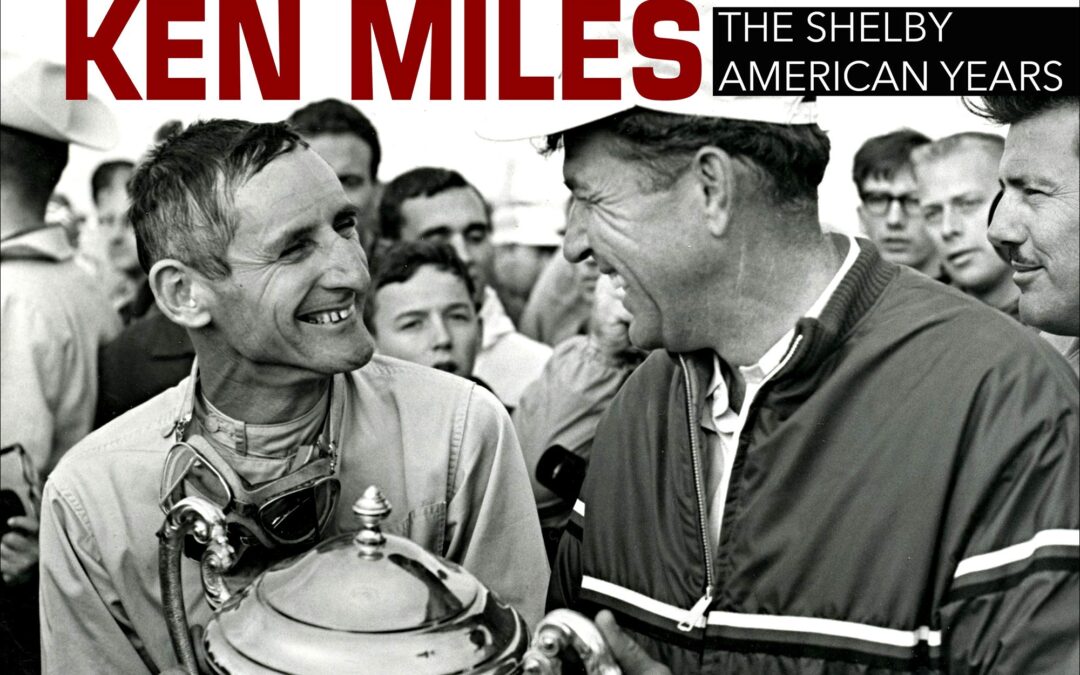
Ken Miles is one of the most famous sports car racers in history, and his time at Shelby American was the pinnacle of his career.
Ride shotgun with Ken Miles through the twists and turns of Sebring, Laguna Seca, Riverside, and Le Mans as seen through the lens of Shelby American photographer Dave Friedman!
The hiring of Ken Miles by Carroll Shelby in February 1963 initiated arguably the greatest pairing of driver/owner partnerships in the history of motorsports. Not only did Shelby hire Competition Manager Ken Miles as an accomplished road racer but also Miles brought professionalism, innovation, and a keen attribute of being able to surround himself with budding, talented individuals.
The list of race cars that Ken piloted at Shelby American is nearly unrivaled: the Shelby 289 Cobra, 390 Cobra, 427 Cobra, King Cobra, Shelby Daytona, Mustang GT350R, and Ford GT. Ken dominated the 1964 United States Road Racing Championship (USRRC) racing season by winning 8 of 10 races to secure the Manufacturers’ Championship. However, it was at Le Mans where Ken Miles became a worldwide household name.
The robbery that was the 1966 24 Hours of Le Mans is laid out in excruciatingly accurate detail as Ford royalty Carroll Shelby, Carroll Smith, Homer Perry, Leo Beebe, Charlie Agapiou, Bob Negstad, Carroll Smith, and Peter Miles recall the race and the tragedy that followed two months later.
Recapture Ken Miles’s career as told by esteemed Shelby American photographer Dave Friedman in this firsthand account titled Ken Miles: The Shelby American Years!

The concise history of the TWR racing team and the compelling story of how TWR Jaguars won the 24 Hours of Le Mans.
Tom Walkinshaw was a successful racing driver who parlayed his knowledge of top level race preparation and driving into a career as a team boss. He first of all steered BMW racecars to success, then Rover and Mazda. He then lured Jaguar, recently privatised again from the clutches of BLMC, into the realm of World Class Endurance racing, resulting in wins at the Le Mans 24 Hour race, the Daytona 24 Hour race and scooping the World Manufacturers’ Championship prize.

The Jaguar D-type helped to establish the Coventry marque’s place in Le Mans 24 Hours folklore, thanks to three successive victories between 1955 and 1957. With its long, elegantly sculptured bonnet and distinctive tail fin, the D-type quickly became one of the world’s most recognisable sports racers – as well as one of the most successful in period.
Jaguar D-type focuses on the fascinating history of XKD 526, one of only three D-types registered new in Australia. While its competition pedigree was forged at some internationally celebrated circuits – Bathurst and Longford, for instance – it also raced at delightfully named bygones such as Gnoo Blas and Catalina Park. This is a comprehensive history of its distinguished track record

Toyota’s unique brand of luck came to the fore once again at the 2019 edition of the 24 Hours of Le Mans.
Although the race finished with a 1-2 for the Toyota Gazoo Racing team, the finishing order saw a dramatic change in the final hours of the action, in a way that always seems to strike Toyota on the Circuit de la Sarthe.
The 24 Hours of Le Mans is always about more than which car crosses the line first. The action-packed official review distills the surprise, excitement and drama of an entire day and night’s racing into four thrilling hours of high-quality entertainment.
Follow the stories in every class as teams and drivers set out to make their mark on the history books.
The challenge of driving at the limit through the night, hour after hour at speeds approaching 200mph on the straights, negotiating notorious corners with famous names such as Mulsanne, Indianapolis, Arnage, Esses and Terte Rouge where a momentary slip of concentration is enough to end hopes: all of the drama that makes Le Mans irresistible is here.
With the incomparable Radio Le Mans team providing detailed commentary every step of the way, the Official Review is the best way to relive this thrilling race in the comfort of your favourite armchair!
Extra features include on-board laps with Sebastien Buemi, Nicolas Lapierre, Laurens Vanthoor and Neel Jani, plus a stunning slow-mo sequence from the 2019 event.
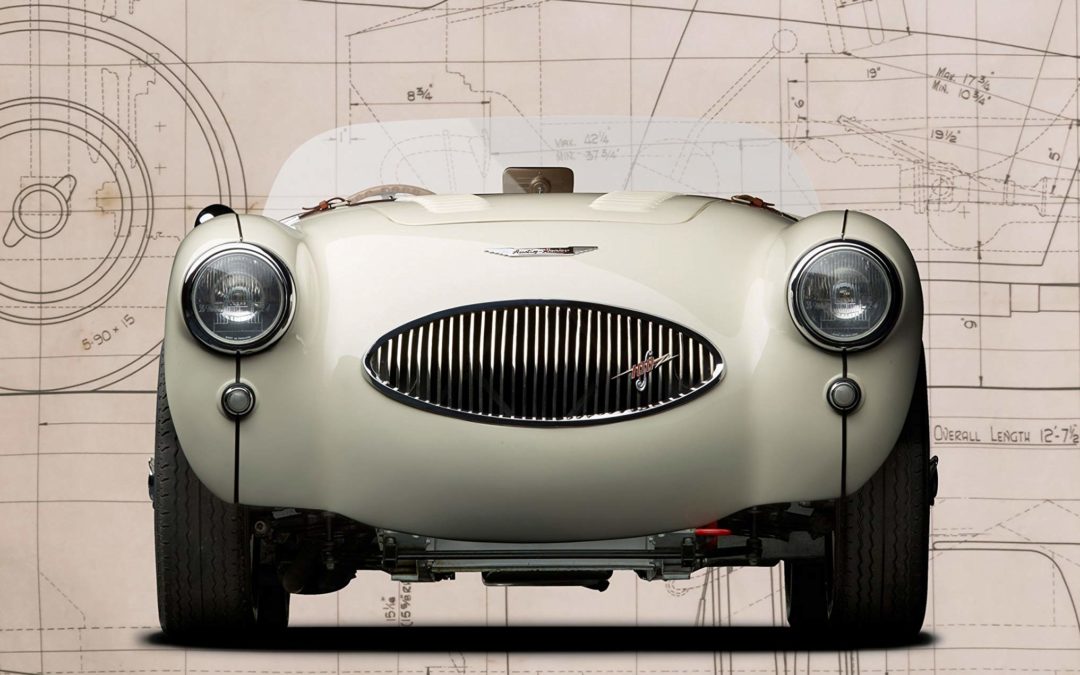
Written in collaboration with Gerry Coker, the designer responsible for the iconic Austin-Healey 100 and Sprite, this extraordinary volume represents the most accurate and complete account of the sports cars built at Warwick, Longbridge, Abingdon and West Bromwich. The author had unprecedented access to Donald and Geoffrey Healey’s private papers, diaries, scrapbooks and photo albums, corporate and financial records from BMC, Donald Healey Motor Company and Healey Automobile Consultants, the files of Jensen Motors and Nash-Kelvinator, dozens of personal interviews and exhaustive research into previously unavailable primary source material. As a result, Healey: The Men and the Machines offers a compelling examination of the true story behind these incredible automobiles and the individuals who created them.
From his early childhood and heroic service as an aviator in the Royal Flying Corps during the First World War, this book provides a comprehensive account of Donald Healey’s motoring career, including competition outings and his involvement with Invicta, Riley and Triumph. The story of the Healey marque’s birth during the darkest days of the Second World War is told through the words of the men involved, revealing the myriad obstacles that faced the small team during a period of strict rationing, limited resources and government meddling.
Fast, elegant and endowed with excellent handling, the early Healey sports cars were among the fastest in the world, acquitting themselves admirably at events such as the Alpine Rally, Mille Miglia and the 24 Hours of Le Mans, but Warwick’s survival was constantly in doubt until the landmark agreement that resulted in the Nash-Healey erased many of small firm’s financial struggles. With access to Nash-Kelvinator’s internal correspondence for the first time, the authors are able to set the record straight about this crucial period in the marque’s history, including the controversial machinations behind the development of the Healey Hundred that made a smash debut at the 1952 London Motor Show.
Lavishly illustrated with previously unpublished photographs, Austin-Healey competition and record-breaking efforts are covered in exquisite fashion, seen through the eyes of legendary names like Rauno Aaltonen, Clive Baker, Paddy Hopkirk, Count Johnny Lurani, Lance Macklin, Timo Mäkinen, Roger Menadue, Don and Erle Morley, Pat and Stirling Moss, Carroll Shelby, John Sprinzel, and Ann and Tommy Wisdom. Equally fascinating are the stories behind the troubled Jensen-Healey and Donald Healey’s attempts to continue building sports cars well into the 1980s, refusing to enter a sedate retirement that would have been so richly deserved.
Destined to become the definitive reference on the subject, Healey: The Men and the Machines includes over 200,000 words, more than 700 detailed footnotes, and eight appendices that cover the competition and record breaking activities of the various models, specifications for every model produced, including the limited production variants, and Donald Healey’s personal musings on racing and sports car design. An instant classic, this is a work certain to inform and entertain enthusiasts of the men and machines that brought the world to its feet at a time when Britain was down on its knees.
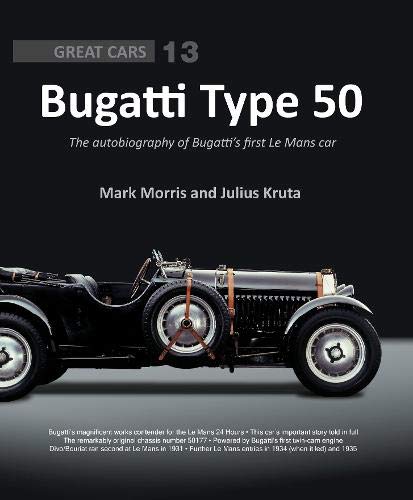
Launched in 1930, the Bugatti Type 50 heralded a new era with the introduction of the Molsheim marque’s first twin-cam design, a supercharged 4.9-litre straight-eight engine of prodigious power. At a time when brute force was needed to win the Le Mans 24 Hours, a competition version was developed and three such Type 50s took part in 1931. The car around which this book is focused, 50177, was leading the famous endurance race when the team withdrew it owing to tyre failures that had afflicted the sister cars, causing one to crash heavily at high speed.
The fascinating story of 50177, and the Type 50 in general, is told in this brilliantly researched and superbly illustrated book in the Great Cars series. Introductory chapters explain the economically perilous world of 1931, the genius of Ettore and Jean Bugatti, the bloodline of large-capacity Bugatti engines, and the Type 46 from which the Type 50 was derived. There follows an in-depth exploration of the Type 50’s design and development, including the Miller inspiration behind its twin-cam engine.
The four Le Mans races in which Type 50s took part form the core of the book and tell a story of promise unfulfilled. The subject car, 50177, raced three times, in 1931 as a works entry with race no. 5 (driven by Albert Divo and Guy Bouriat) and in 1934 and 1935 with works assistance as no. 2 (driven by Pierre Veyron and Roger Labric). A section about the drivers presents illustrated biographies of the four men who raced 50177 as well as the four others in the 1931 works team — Louis Chiron and Achille Varzi in no. 4 and Maurice Rost and Count Caberto Conelli in no. 6. Post-war, three-time Le Mans winner Luigi Chinetti bought 50177 in 1949 and took it to America, where it spent nearly 50 years with five different owners. The last of them was Miles Coverdale, a passionate Bugatti collector who kept the car for 23 years and uncovered much of its history through correspondence with former works mechanics, notably Robert Aumaître.
Co-authors Mark Morris and Julius Kruta, wellknown in the Bugatti world for their immense knowledge and enthusiasm, present a wealth of fresh information and illustration in this fine book.

Get the Book Everyone is Talking About!
After three years of research, countless interviews, and looking through thousands of photos it’s finally here: Hurley Haywood’s life story.
From his upbringing in Chicago and Wheaton, Illinois, to his chance meeting with Peter Gregg, Hurley Haywood was destined to drive anything he could get his hands on. Life-long relationships with Porsche and the Brumos dealership provided the kinds of opportunities of which most racing drivers only dream.
With three overall victories at Le Mans, five at the Rolex 24 at Daytona, and two at the 12 Hours of Sebring, Haywood is the world’s most successful endurance sports-car racer. In addition, Haywood won several championships and dozens of other races during a career spanning more than 43 years.
Now, in this book of 420 pages with over 650 photos, Haywood tells it all. From the beginning.
